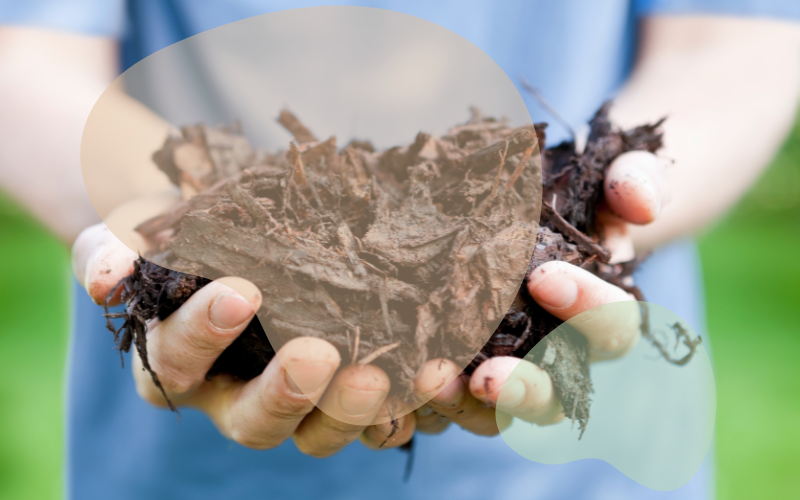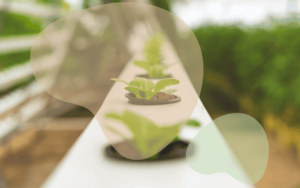The Magic of Mulch
Okay. Let us unpack this.
Imagine if there was a simple thing you could do in your garden, something that would drastically reduce weeding, reduce your watering needs, build incredible soil health, and make your plants happier. Even better, it is often free or very cheap. It sounds like gardening magic, right?
Well, this magic has a name: mulch.
Covering bare soil is one of the most fundamental and transformative practices in gardening. Our mission in this deep dive is to provide core insights about mulching, going beyond just the basics. We want you to understand why it is so crucial and help you navigate the different mulch types. Lastly, we will explain how to use them effectively for maximum impact.
As you will see, materials range widely. From simple things you might already have in your yard, such as leaves and grass clippings, to more specialized products. There is mulch suited for almost any specific situation or goal you might have in your garden.
Why Mulching Is Important
At its heart, mulching is about mimicking nature. Think about a forest; are the floors exposed to bare soil? No. It has a layer of fallen leaves, twigs, and decaying plant matter. That natural blanket protects the soil ecosystem. Mulching is our way of creating the same protective layer in our gardens.
Reasons Why Mulching Is Important
1. Weed Suppression
At the top of the list for many gardeners is weed suppression.
A good layer, typically two to three inches deep, physically blocks sunlight from reaching the soil surface.
Weed seeds need light to germinate. By mulching, you prevent countless weeds from even starting. Any persistent weeds that manage to push through become much easier to pull out from the soft soil underneath.
2. Moisture Retention
Moisture is especially critical due to unpredictable weather conditions. Mulch acts like an umbrella, drastically reducing water evaporation from the soil surface.
It helps the soil retain moisture better. In established beds with clay soil, applying mulch effectively could mean you only need to water three or four times in the summer. Saving effort conserves precious water and prevents nutrients from being flushed out of the soil due to frequent watering.
3. Temperature Regulation
Mulch is an excellent insulator for the soil. In the summer heat, it keeps the soil cooler, vital for protecting plant roots and microbial life just below the surface.
In cooler spring or fall temperatures, it helps retain warmth. By giving plants a better start, you extend the growing season and provide winter protection. For crops like garlic or strawberries, it prevents repeated freezing and thawing, which can damage plants. Mulch is a climate control for your garden.
4. Improved Soil Health
Organic mulches such as leaves, wood chips, and straw break down over time, feeding the soil.
Mulch adds valuable organic matter and nutrients, fueling the soil food web, a complex community of bacteria, fungi, worms, and other organisms that build healthy soil. Improving soil structure means better water and nutrient retention and enriches biodiversity, especially in the topsoil. Most plant roots are in the topsoil. Mulch is not just a blanket; it is a meal.
5. Protection Against Erosion
Bare soil is vulnerable to erosion. Heavy raindrops can compact soil, wash away topsoil, and damage roots. A mulch layer absorbs the impact of falling water, allowing it to soak in gently instead of running off and taking soil with it. Even just an inch or two can make a big difference.
6. Disease Prevention
This benefit is more subtle but equally important. Many plant diseases originate from pathogens residing in the soil. When it rains or you water, these particles can splash onto lower leaves.
The use of mulch prevents splash-ups, thereby maintaining cleaner leaves and mitigating disease transmission.
7. Natural Pest Control
Mulch can deter certain pests that lay eggs in bare soil. It creates a habitat for beneficial insects such as spiders and ground beetles that prey on harmful pests.
Using natural mulch (instead of landscape fabric) allows ground-feeding birds, like robins, to forage for cutworms and other pests, making them part of your natural pest control team.
How to Apply Mulch Correctly
Prepare the Area
Before you lay mulch, remove all existing weeds and grass. If you skip this, they will grow through your mulch and be impossible to remove later. Clear any debris that may be present.
How Deep Should Mulch Be?
For most garden beds, aim for a two to three-inch deep layer.
For coarser materials, such as bark nuggets, go three to four inches deep. If you direct-seed, use no more than an inch of mulch, allowing seeds to sprout with ease.
How Close Should You Mulch to Plants?
Avoid piling mulch directly against stems, especially for trees and shrubs. This “mulch volcano” traps moisture, risking rot and fungal diseases.
Leave a buffer of a few inches around plant bases. For trees and shrubs, spread mulch in a doughnut shape to retain moisture over the root zone without smothering the base.
Best Time to Apply Mulch
Apply mulch right after planting, ideally before watering for the first time, to lock in moisture. In fall, mulch bare beds to protect them over winter. If you are seeding into the soil, wait until seedlings are a few inches tall before applying mulch.
What Happens to Mulch Over Time?
Organic mulches are low-maintenance; once applied, they can break down by themselves. Over time, it improves overall soil health. Just top it up as needed in subsequent years.
Choosing the Right Mulch
The best mulch depends on your goals and what is available to you. But be cautious with some materials.
Take compost, for example. While it is excellent when worked into the soil or used as a top dressing under mulch, it is not ideal as a primary surface mulch. Compost can dry out, crust over, and lose effectiveness at retaining moisture or suppressing weeds.
Mulching offers a natural way to improve your home garden. With effective mulching techniques and materials, mulch can transform your gardening experience.




